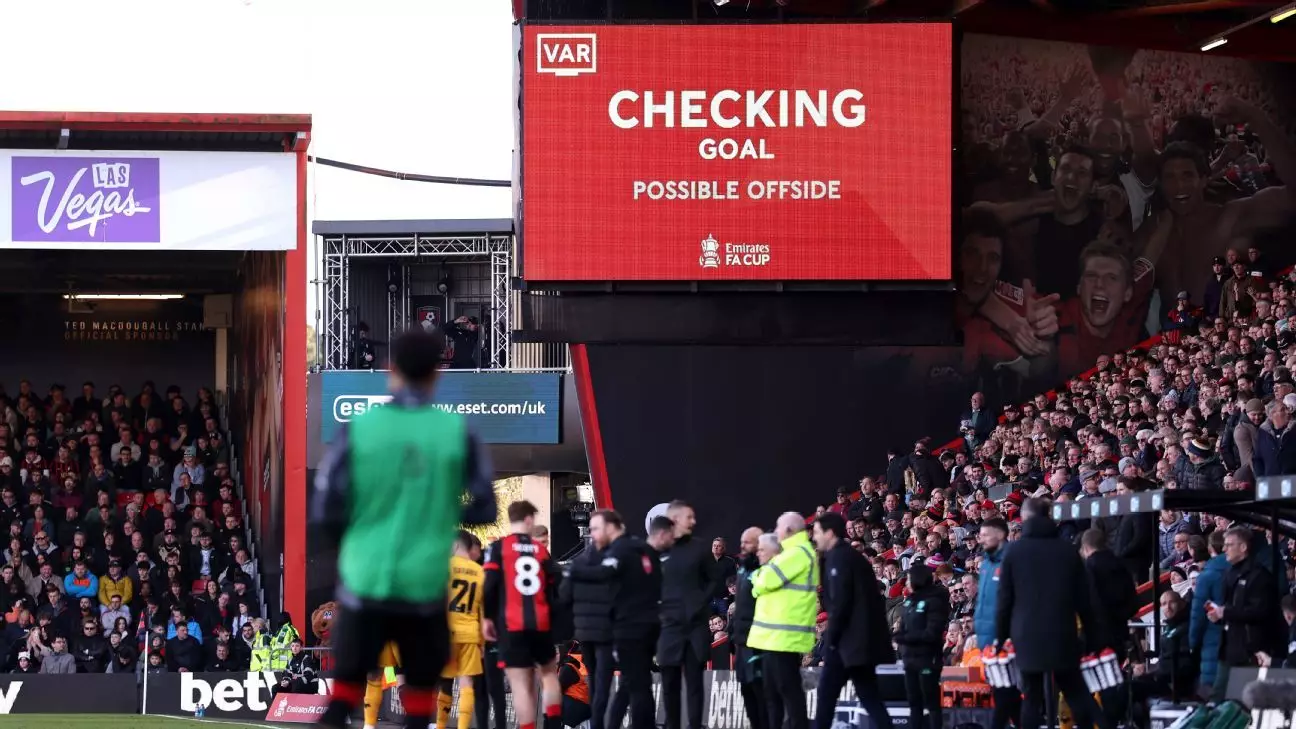The Premier League is set to make a transformative leap in officiating accuracy as it rolls out its semi-automated VAR offside technology (SAOT). This decision, which will be implemented starting from Matchweek 32 during the weekend of April 12-14, reflects a significant commitment to improving the game. This change comes nearly a year after Premier League clubs unanimously agreed to adopt this technology, showcasing a collective ambition to modernize their officiating systems and enhance the spectator experience.
Originally scheduled to enter the fray after a 2024 international break, the implementation of SAOT faced several setbacks. These delays from rigorous testing underscore not only the inherent complexities involved in integrating advanced technologies into traditional sports but also highlight the league’s commitment to ensuring that the final product operates effectively during live matches. The opening match utilizing SAOT between Bournemouth and Wolverhampton was particularly illustrative of these challenges, featuring a record-breaking eight-minute VAR review that sparked debates about technology’s role in the sport. The fact that referees reverted to traditional VAR methods underlines the technology’s still-evolving status.
Shaping a Unique Solution: The Premier League’s Approach
Another noteworthy aspect of the Premier League’s story is its decision to develop its custom technology rather than simply adopting existing systems from other leagues. While Serie A and LaLiga have successfully integrated their SAOT, questions arise about the Premier League’s unique path. Tony Scholes, the league’s chief football officer, has confidently expressed his belief that their bespoke approach will yield not only the most accurate but also the most durable system. His assertions suggest a forward-thinking mentality that prioritizes refinement over imitation, aiming to carve out a specific identity for Premier League officiating.
Moreover, the league’s reluctance to employ the ball-chip technology used in FIFA and UEFA competitions raises provocative questions about adaptability and innovation. Given that Adidas holds the patent for the ball-chip system, the Premier League faces potential obstacles in effortlessly implementing such advanced measures. Interestingly, this decision could set a precedent that prioritizes operational ingenuity over industry norms, possibly paving the way for unique contributions to officiating technology.
Reducing Delays: The Potential Impact on Match Flow
A pivotal promise of SAOT is to streamline the often-disruptive process of offside reviews. The expectation is that the technology will reduce average offside check durations by about 31 seconds. Such a decrease could profoundly affect the overall tempo and flow of matches. Fans and players alike have become increasingly frustrated with the lengthy interruptions caused by traditional VAR processes, which can feel disproportionate to the incidents being reviewed. By shrinking review times, the Premier League aims not only to improve the immediacy of gameplay but also to restore a natural rhythm that is often disrupted by technology.
While the technology offers promising advancements, the lingering shadow of past VAR controversies looms large. Concerns surrounding earlier VAR decisions, like the contentious disallowance of a last-minute Juventus goal due to a VAR error, remind the footballing world that any technological advancement must be meticulously scrutinized. As SAOT is integrated into the Premier League, maintaining the integrity of the game while adopting new technologies will be paramount.
Emphasizing Accuracy and Future-Proofing
The Premier League’s venture into semi-automated technology is monumental not just for the present but for the future of football officiating. As technology continues to evolve and could potentially introduce even more complexities, Scholes’s perspective on adopting a “futureproof” system becomes especially relevant. The concept of creating an intelligent, adaptable tool that can grow with the game’s demands is inspiring, and if executed correctly, it could set new standards for leagues around the world.
In a footballing landscape often marred by controversy, the pursuit of clearer, more reliable decision-making mechanisms is critical. Implementing SAOT could mark a turning point that reignites confidence among players, clubs, and fans in the fairness and integrity of officiating. Although the rollout may not be flawless, the Premier League’s proactive stance on implementation reflects a decisive move towards leveraging technology in a way that enhances, rather than detracts from, the theatrical experience of football.
Ultimately, the success of SAOT will hinge on its execution in real match situations, and only time will tell if the Premier League’s gamble pays off in redefining offside decisions. As they step into this new era, all eyes will undoubtedly be on how effectively technology can meet the high stakes of the global game.

